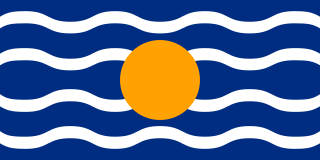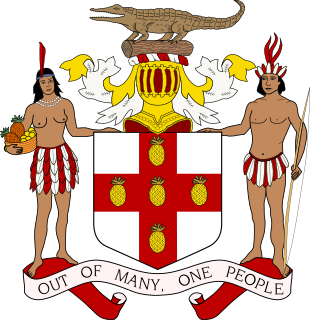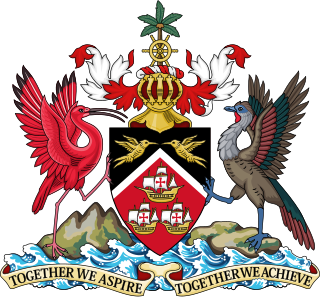 W
WThe West Indies Federation, also known as the West Indies, the Federation of the West Indies or the West Indian Federation, was a short-lived political union that existed from 3 January 1958 to 31 May 1962. Various islands in the Caribbean that were colonies of the United Kingdom, including Trinidad and Tobago, Barbados, Jamaica, and those on the Leeward and Windward Islands, came together to form the Federation, with its capital in Port of Spain, Trinidad and Tobago. The expressed intention of the Federation was to create a political unit that would become independent from Britain as a single state—possibly similar to the Canadian Confederation, Australian Commonwealth, or Central African Federation; however, before that could happen, the Federation collapsed due to internal political conflicts over how the Federation itself would be governed or how it would viably function. The formation of a West Indian Federation was encouraged by the United Kingdom, but also requested by West Indian nationalists.
 W
WThe following is a list of the Governors-General of the West Indies Federation, consisting of Antigua, Barbados, Cayman Islands, Dominica, Grenada, Jamaica, Montserrat, St. Christopher-Nevis-Anguilla, St. Lucia, St. Vincent, Trinidad and Tobago, and Turks & Caicos Islands. The Federation was formed on 3 January 1958, and was formally dissolved on 31 May 1962.
 W
WThis is a list of the prime ministers of the West Indies Federation, consisting of ten provinces: Antigua, Barbados, Dominica, Grenada, Jamaica, Montserrat, St. Christopher-Nevis-Anguilla, St. Lucia, St. Vincent, and Trinidad and Tobago. The federation was formed on 3 January 1958, and was formally dissolved on 31 May 1962.
 W
WGeneral elections were held in Barbados on 4 December 1961. They were the first held after Barbados was granted full self-government earlier in the year. 24 MPs were elected across twelve two-member constituencies, using the block vote method.
 W
WGeneral elections were held in Grenada on 27 March 1961. Eric Gairy's Grenada United Labour Party won eight of the ten seats, his wife Cynthia Gairy becoming the first woman to be elected to the legislature. George E.D. Clyne of GULP became Chief Minister and served from March to August 1961 when, following the direct intervention of the British government, Gairy's political ban was lifted early, and Clyne resigned allowing Gairy to return in a by-election and become Chief Minister. Voter turnout was 55.5%.
 W
WA referendum on continued membership of the Federation of the West Indies was held in Jamaica on 19 September 1961. Voters were asked "Should Jamaica remain in the Federation of the West Indies?" The result was 54.1% voting "no", resulting in the country leaving the federation and its dissolution in 1962. Voter turnout was 61.5%.
 W
WGeneral elections were held in Saint Lucia on 14 April 1961. The result was a victory for the Saint Lucia Labour Party, which won nine of the ten seats.
 W
WAthletes from the West Indies Federation competed under the name Antilles (ANT) at the 1960 Summer Olympics in Rome, Italy. Thirteen competitors, all men, took part in thirteen events in five sports. The short-lived nation only participated at these single Games, as Jamaica and Trinidad and Tobago competed independently again in 1964, and Barbados started competing at the 1968 Games. The team won two bronze medals, both in track and field athletics.
 W
WThe coat of arms of the West Indies Federation was used between 1958 and 1962. The background of the shield bore four equally spaced narrow white stripes with a ten orange-gold discs representing each island grouping, undulating horizontally across a blue field representing the Caribbean Sea and the sun shining upon the waves. These devices were based upon the flag originally designed by Edna Manley. A triangle is superimposed on the shield, and the shield is topped by a British lion. The scroll beneath proclaims To Dwell Together In Unity. The shield is supported on either side by the country's national bird, the pelican, with wings extended. Above this is a helmet topped with a flaming torch held by an upright arm. The torch signifies a beacon to light a path.
 W
W"Forged from the Love of Liberty" is the national anthem of the Republic of Trinidad and Tobago. Originally composed as the national anthem for the short-lived West Indies Federation (1958–1962), this song was edited and adopted by Trinidad and Tobago when it became independent in 1962.
 W
WPresident's House is the official residence of the President of Trinidad and Tobago, located in the capital city Port of Spain, on Trinidad island, Trinidad and Tobago. It is next to the Royal Botanic Gardens.
 W
WSaint Christopher-Nevis-Anguilla was a British colony in the West Indies from 1882 to 1983, consisting of the islands of Anguilla, Nevis, and Saint Christopher. From 1882 to 1951, and again from 1980, the colony was known simply as Saint Christopher and Nevis. Saint Christopher and Nevis gained independence in 1983 as the Federation of Saint Kitts and Nevis, while Anguilla would remain a British overseas territory.
 W
WThe flag of the West Indies Federation was used between 1958 and 1962. It bore four equally spaced narrow white stripes with a large orange-gold disc over the middle two lines in the center of the flag, undulating horizontally across a blue field representing the Caribbean Sea and the sun shining upon the waves. The flag was originally designed by Edna Manley. The flag is shown as 1:2; the upper two white stripes reflect the lower ones.